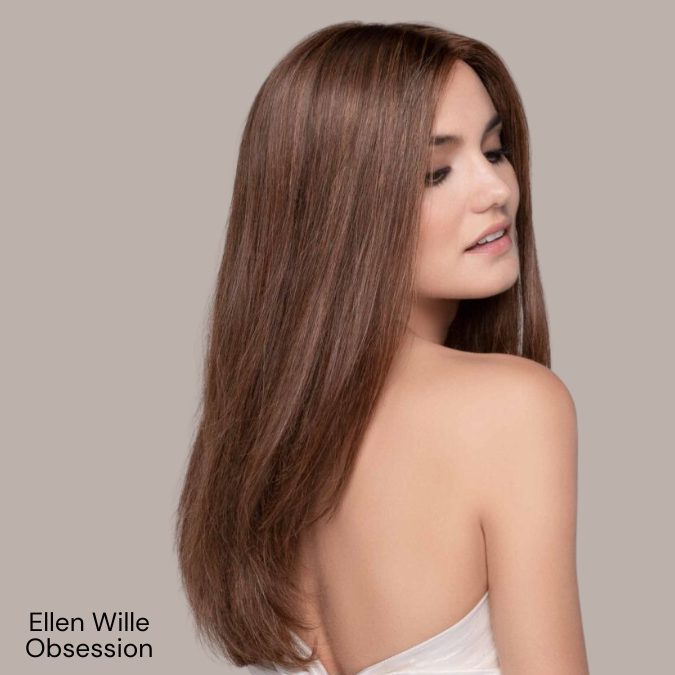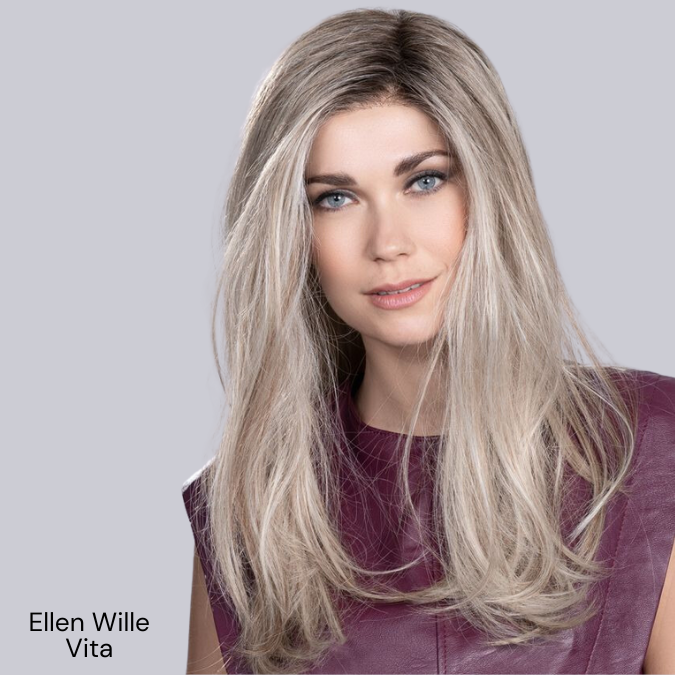Different Types of Wig Hair
Discover all the wig hair types we have. Roches has wigs, hairpieces and hair systems for men, women, and children, whether your hair loss is short or long-term, partial, or all-over – and even if you do not know yet.
Choosing the right type of wig can be overwhelming if you’re new to it. Here’s a simple guide to help you understand the different hair types available and what might suit your needs best.
Skip to a Section

Synthetic Hair Wigs
Synthetic Hair Wigs are made from man-made fibres designed to look and feel like real hair.
Pros:
- Low Maintenance: Synthetic Hair Wigs hold their style well, so you don’t need to spend much time styling them.
- Affordable: Usually less expensive than human hair wigs.
- Weather-Resistant: They aren’t affected by humidity, so they hold their style regardless of the weather.
Cons:
- Limited Styling: You can’t use heat tools like straighteners or curling irons on most synthetic hair wigs.
- Less Natural Feel: While they can look very realistic, they may not feel as natural as human hair wigs.
- Friction frizz: Caused by rubbing against clothing like scarves or coats. The friction between the synthetic fibres and fabric can cause the hair to tangle or frizz over time, particularly in longer wigs that are more likely to come into contact with your clothing. But frizz can be conditioned and removed.
Best For:
Those who want a low-maintenance, budget-friendly option and don’t need to restyle their wig often.
Human Hair Wigs
Human Hair Wigs are made from real human hair, offering the most natural look and feel.
Pros:
- Natural Look and Feel: They look, move, and feel just like your own hair.
- Versatile: You can style them with heat tools, dye them, and treat them like your own hair.
- Longevity: With proper care, they can last a long time.
Cons:
- High Maintenance: Like natural hair, they need regular washing, conditioning, and styling.
- Expensive: They are generally more costly than synthetic wigs.
- Weather-Sensitive: They can be affected by humidity, rain, and wind, just like natural hair.
Best For:
Those who want the most natural look and are willing to invest time and money into maintenance.


Heat Resistant Wigs
A type of synthetic hair wig that can withstand heat styling tools up to a certain temperature.
Pros:
- Styling Flexibility: Unlike regular synthetic wigs, you can use curling irons, straighteners, or blow dryers to change the style.
- Low Maintenance: Still easier to care for than human hair wigs.
- Affordability: Generally more affordable than human hair wigs.
Cons:
- Limited Heat Use: You need to be cautious with the heat settings to avoid damaging the wig.
- Not as Long-Lasting: They may not last as long as human hair wigs.
Best For:
Those who want some styling flexibility but don’t want the full maintenance routine of a human hair wig.
Mixed Fibre Hair
These wigs are made from a mix of human hair and synthetic hair fibres.
Pros:
- Balanced Benefits: They offer a more natural feel than synthetic wigs but are less expensive and lower maintenance than full human hair wigs.
- Styling Flexibility: Depending on the blend, you may be able to use heat styling tools.
- Durability: They often last longer than purely synthetic wigs.
Cons:
- Inconsistent Feel: The blend may not feel as natural as 100% human hair.
- Variable Maintenance: Depending on the blend, the care routine can vary.
Best For:
Those looking for a compromise between the natural look of human hair and the ease of synthetic wigs.

Summary
- Go for a synthetic hair wig if you want something affordable and easy to care for.
- Choose a human hair wig if you’re after the most natural feel and don’t mind putting in the effort to maintain it.
- Consider a heat-resistant synthetic wig if you want some styling flexibility without the higher cost of a human hair wig.
- Opt for a blended wig if you want a middle ground between natural feel and ease of care.
Ultimately, the best choice depends on your lifestyle, budget, and how much time you’re willing to spend on maintenance.
